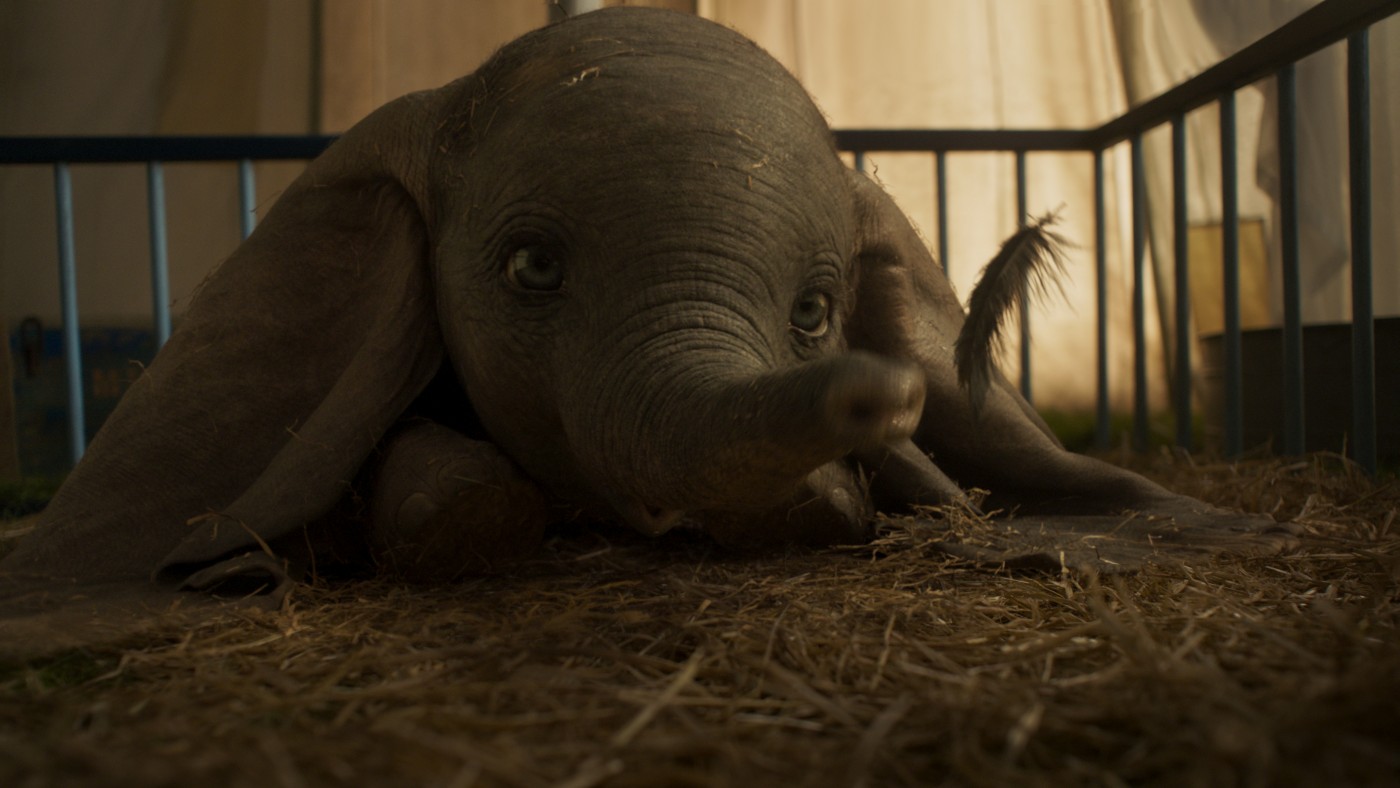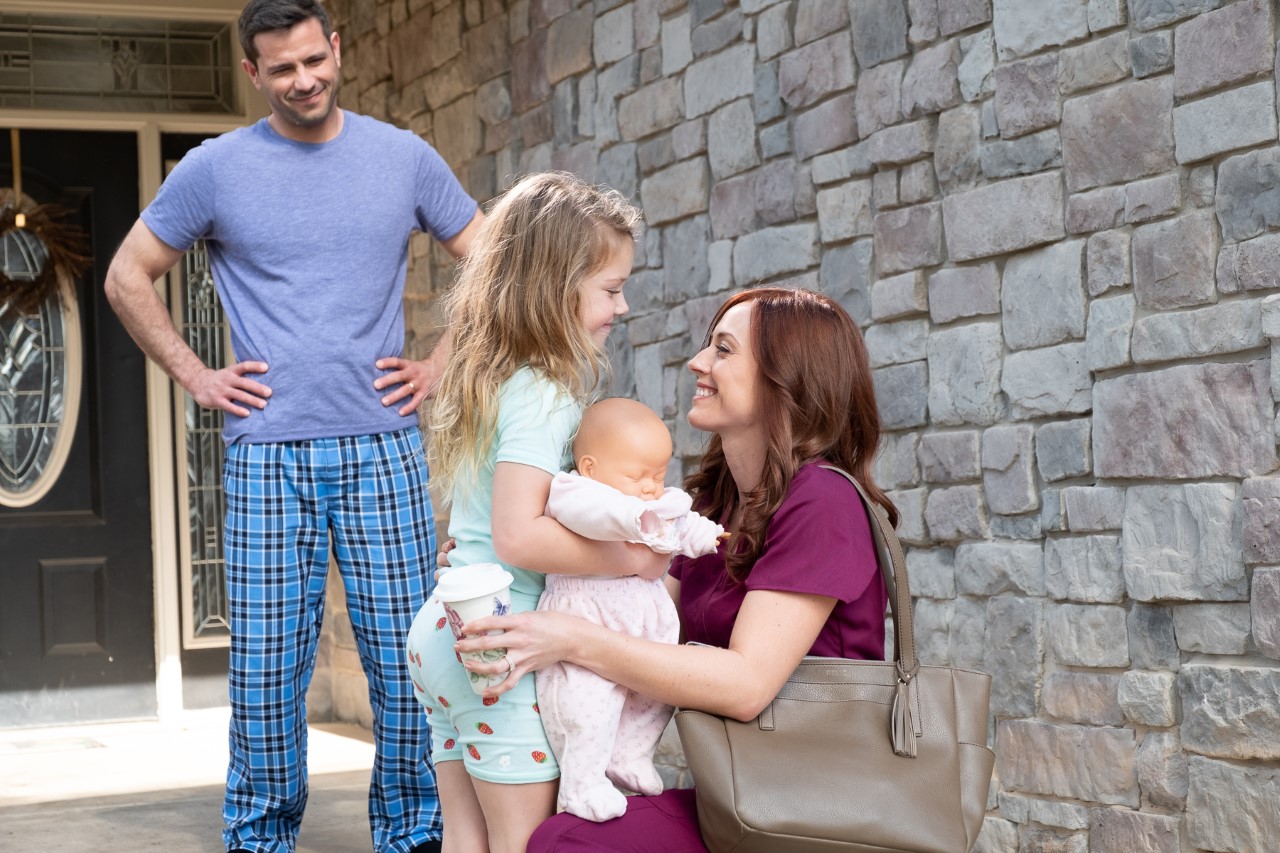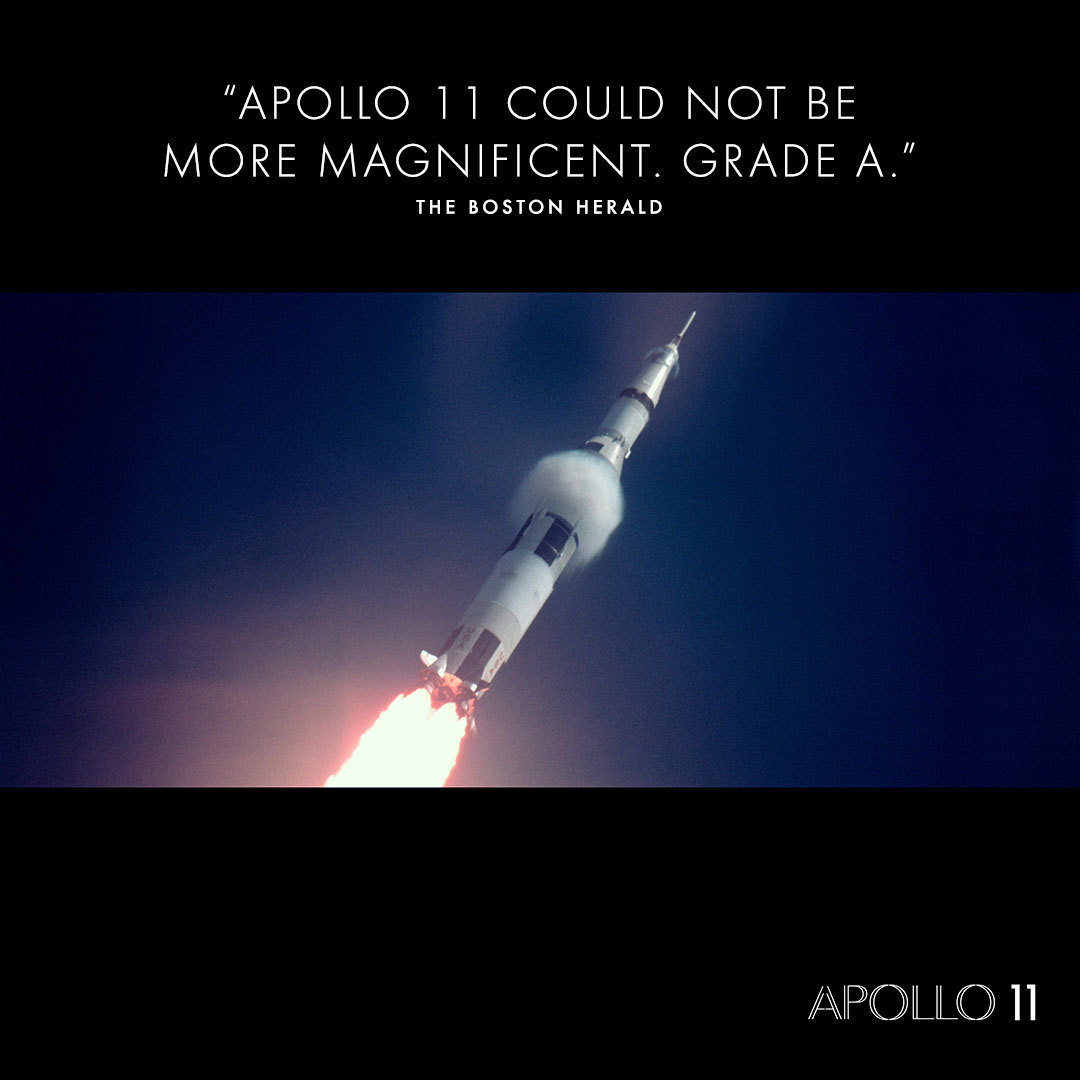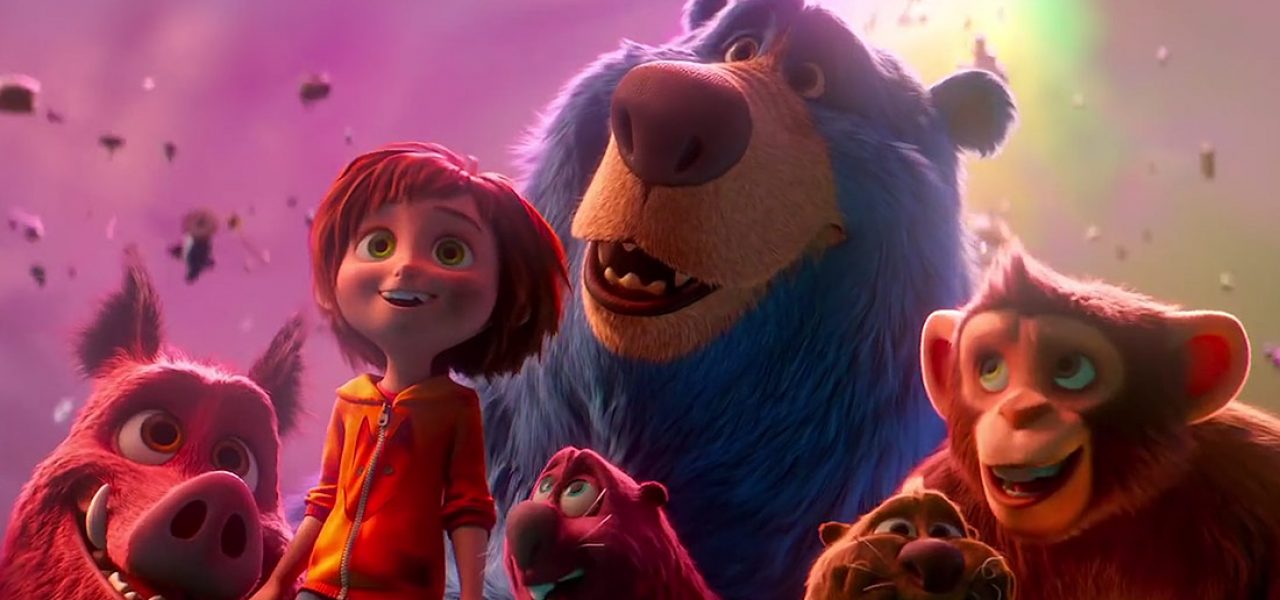
by Michael Foust | Mar 29, 2019
Disney’s film ‘Dumbo’ opens this weekend, giving us a live-action remake of the 1941 animated classic.
Holt Farrier is a dispirited father who lost his left arm in
battle and his wife to influenza.
Yes, he still has his two young children and his job in the
traveling Medici Brothers Circus, but things have changed since he returned
from World War I. His relationship with his daughter has suffered. His job—as a
horse-riding stuntman—has suffered, too. Circus owner Max Medici sold the horses.
This means Farrier has a new task: taking care of the
pregnant elephant.
“It’s a big job,” Medici tells him.
That’s because the elephant’s calf will become the center of
the show. Newspapers will cover it. Most importantly, Medici will sell more
tickets.
Yet something strange happens when Medici’s pregnant
elephant gives birth. This new calf has most of the features of an elephant—a
trunk, a large head and a body the size of a boulder—but it has
larger-than-normal ears, too. They’re so big, in fact, that they cover its
face.
Medici is incensed.
“I already got fake freaks in the freak show. I don’t need a
real one in the center ring,” he says.
This new baby elephant, labeled “Dumbo,” gets insulted
wherever it goes. Soon, though, it displays a unique talent that transforms it
from “freak” into an attention-grabbing phenom.
Disney’s film Dumbo
opens this weekend, giving us a live-action remake of the 1941 animated classic
that was nominated for two Oscars and won one. It stars Colin Farrell (Fantastic Beasts and Where to Find Them)
as Farrier, Danny DeVito (Throw Momma
from the Train) as Medici, and Michael Keaton (Spider-Man: Homecoming) as V. A. Vandevere, a theme park owner who
purchases Medici’s circus.
The movie stays true to the core story of the original while
giving it a third act beyond Dumbo’s discovering that he can fly. Like the
original, it also includes plenty of positive life lessons for children.
Warning:
minor/moderate spoilers!
(Scale key:
none, minimal, moderate, extreme)
Violence/Disturbing
Minimal. The film opens with the two children, Milly and
Joe, meeting their father at the train station and discovering he lost an arm
in World War I. We then learn their mother died from influenza. Holt later
punches a man who is mistreating Dumbo’s mother. A circus tent pole falls on a
man, who dies (It’s not graphic; we then see the coroner). One of the sections
of Vandevere’s theme park Dreamland is “Nightmare Island,” where the “most
dangerous beasts in the world” are kept (It houses wolves and an elephant named
Kali the Destroyer, but will trouble only sensitive children). Several times in
the film, Dumbo and other circus artists perform high-wire acts that place them
in peril. Later in the film, a tent catches fire, endangering a family.
Sexuality/Sensuality/Nudity
None.
Coarse
Language
Minimal. H-ll (3), misuse of “God,” and an unfinished “bull—-.”
Other
Positive Elements
Dumbo’s mother protects her son, and he loves her in return.
It’s touching. Milly and Joe love and encourage Dumbo in the midst of the
taunts.
Other Stuff
You Might Want To Know
Medici encourages Milly to learn telepathy (she doesn’t). A
Hindu man, seeing Dumbo fly, say his people believe “gods can take animal
form.”
Life Lessons
Our social media-crazed, hyper-critical society needs Dumbo, simply to help children
understand and respond to bullying. It’s painful to watch him get insulted. Yet
it’s wonderful to watch him overcome the taunts and to discover his unique
ability. It’s also uplifting to watch Milly and Joe encourage him. Like Wonder, Dumbo helps us empathize with
the character being bullied. It also gives us a positive example of responding
to it.
The film provides not one but two characters with
disabilities (Dumbo and Farrier). It also presents multiple characters who are
battling a loss (Dumbo and Milly and Joe).
Of course, the movie teaches us to have courage. After all,
the feather Dumbo trusted had no magical power.
Worldview/Application
Dumbo isn’t a Christian movie, but its
core message—all of us are unique and loved—is founded in Christian principles.
We are all made in the image of God (Gen. 1:26), and we are all valuable to Him—disabled
and non-disabled. That’s a message all children need to learn from Dumbo.
Sponsors
Spirit Airlines and The Giving Keys are the primary
sponsors.
What Works
The interaction between animation and real-life characters.
Yes, it’s a normal part of movie magic, but it never grows old. The film’s
animal-human parallel—Dumbo and Farrier—is a nice touch, too.
What Doesn’t
Farrell’s Southern accent.
Discussion
Questions
1. What did you learn about bullying from watching Dumbo?
2. What did Dumbo
teach you about disabilities?
3. What can you do to encourage others who are different?
Entertainment rating: 3 out of 5
stars. Family-friendly rating: 4 out
of 5 stars.
Rated PG for peril/action, some thematic elements, and brief mild language.
PHOTO CREDIT: Disney

by Michael Foust | Mar 22, 2019
The film ‘Unplanned’ opens in theaters March 29, telling the true story of a Planned Parenthood director who quit her job to become a pro-life advocate.
Abby is an outgoing and friendly college student who is
still uncertain what she believes about life—literally and figuratively.
Thus, when a Planned Parenthood worker at a university event
asks if she’s interested in volunteering at the clinic, Abby barely hesitates.
Yes, her parents won’t approve, but Abby wants to help women.
Her task: escort the patients from the parking lot to the
front doors, shielding them from the pro-life protesters.
Abby—it turns out—enjoys it. She’s making a difference.
She’s protecting women. At least, that’s what she tells herself.
Pretty soon, Abby’s role progresses from volunteer to paid
employee. And eventually, she becomes clinic director.
Her pro-life Christian parents hate her job, but she doesn’t
care. Besides, there are religious people in the pro-choice community,
too.
“I don’t care what anyone says,” a co-worker
says. “I am doing God’s work here.”
But then Abby is asked to help with an
abortion. And then she witnesses, first-hand, the moral horrors it entails. And
then she begins having doubts about her beliefs on abortion.
The film Unplanned
(R) opens in theaters March 29, telling the unlikely true story of Abby
Johnson, a former Planned Parenthood director who quit her job to become a
pro-life advocate.
It stars Ashley Bratcher (90 Minutes In Heaven) as Abby; Jared Lotz as Shawn, a pro-life
worker with 40 Days for Life; and Emma Elle Roberts (I’m Not Ashamed) as Marilisa, another worker with 40 Days for
Life.
The film begins with the pivotal abortion
scene but then jumps back eight years to her college days, showing how she
climbed the ranks to become clinic director.
Its filmmakers were aiming for a PG-13 rating
but got stuck with an R—an undeserved rating that can only be described as one
of the worst decisions in the history of the ratings board. The R is for “some
disturbing/bloody images.” Yet broadcast television regularly exceeds the
disturbing and bloody content of Unplanned—as
does every PG-13 superhero film in the last decade (More on that in a moment).
Despite the rating, Unplanned is appropriate for teens and mature tweens.
Warning: minor/moderate spoilers!
(Scale key: none, minimal, moderate,
extreme)
Violence/Disturbing
Moderate. The film deals with the subject of abortion, but
it never shows an abortion from the perspective of the doctor, even though we
are in the room. We see an abortion take place on a computer screen (a
sonogram), as the small baby is in the picture one instance and gone the next.
We see a clothed woman sitting on a toilet, blood dripping off the seat. She
steps in the shower (still clothed) with blood dripping down her leg. She picks
up a bloody blob off the floor and puts in in the toilet (presumably it was the
small baby). In another scene, a father pressures a teen girl to have an
abortion; there are complications in the room, but she survives. Still another
scene shows pieces of an aborted baby on a table. All total, these scenes last
perhaps five to 10 minutes. Most of the movie focuses on Abby’s journey.
Sexuality/Sensuality/Nudity
Minimal. Two people kiss.
Coarse
Language
Minimal. H-ll (2), d–nit (2), a– (1).
Other
Positive Elements
The film contrasts the peaceful, prayer-filled protests of
40 Days for Purpose (Shawn and Marilisa) with
that of protesters who are screaming unkind words toward the women. It’s
obvious which strategy works best.
Abby’s pro-life parents accept and love her unconditionally,
even if they strongly disagree with her job.
Life Lessons
Unplanned gives us lessons on patience and
prayer (Shawn and Marilisa, Abby’s parents), blindness to sin (Abby), and
unconditional love (Abby’s parents and husband).
Worldview/Application
There have been more than 60 million abortions since the
1973 Roe v. Wade decision legalized
the procedure nationwide. And despite the best efforts of pro-lifers, roughly
half the country still considers itself pro-life. Why?
Perhaps Americans are just like Abby Johnson once was. Maybe
they are pro-choice because they never have to think about abortion. They never
have to watch an abortion. They never have to consider the ramifications of
their stance. It takes place in a private clinic, in a private room, behind
closed doors.
This doesn’t mean it’s necessary to watch an abortion to
change from pro-choice to pro-life. But it does mean that when we consider what
abortion is and what it involves, we are faced with a moral choice that many
people would rather avoid.
What Works
The interaction between Abby and the pro-lifers. The
screenplay and the film’s structure. It makes for a gripping story. The movie’s
final 30 minutes is emotion-laden and well done. It ends on a high note.
What Doesn’t
One or two scenes are over the top and could be viewed as
propaganda by the pro-choice community.
Discussion
Questions
1. What does the Bible say about the unborn? (See Psalm 139,
Jeremiah 1:5.)
2. What did the first Christians think about abortion? (Google
the “Didache and abortion.”)
3. What led Abby to change her mind about abortion? Do you
think there are other people like Abby in our society?
4. Did the film change how you view abortion and Planned
Parenthood? Explain.
Entertainment rating: 3.5 out of 5
stars. Family-friendly rating: 3.5
out of 5 stars.
Rated R for
some disturbing/bloody images.

by Michael Foust | Mar 22, 2019
A new documentary, appropriately named ‘Apollo 11,’ brings the 50-year-old mission to life, thanks to a newly discovered batch of film.
Apollo 11’s mission to the moon was among the greatest achievements
in world history, but—sadly—it wasn’t captured with today’s high-definition
video cameras.
Instead, we’re left only with grainy footage showing Neil
Armstrong stepping on the moon and Walter Cronkite describing the action.
Then again … maybe not.
A new documentary, appropriately named Apollo 11 (G), brings that 50-year-old mission to life, thanks to a
newly discovered batch of 65mm film and more than 11,000 hours of uncatalogued
audio recordings—most of which we’ve never seen or heard.
The result is a 90-minute movie that nearly has the
appearance of being filmed yesterday and makes you feel like you’re living in
1969.
It’s among the best documentaries I’ve seen and—minus two moments
of coarse language—is squeaky-clean for the entire family.
It was directed and edited by Todd Douglas Miller, who is
best known for his work on another documentary, Dinosaur 13. He said he wanted to avoid using the footage the
public already had seen.
“I’m such a fan of space films, and when we started this
project, I was seeing everything again ad nauseum, so I knew what was out
there,” he told the entertainment site MoveableFest.com.
Miller succeeded in his quest. For example, the iconic black-and-white
film of Armstrong stepping down the ladder isn’t even in the movie. Instead, we
watch a color film that was recorded inside the lunar lander by his crewmate,
Buzz Aldrin.
The rest of Apollo 11
follows a similar pattern, as we enjoy never-before-broadcast footage of event
after event. Instead of grainy television footage of the launch, we’re treated
to an up-close 65mm footage of the rocket lifting from the pad and piercing the
clouds. That alone is worth the price of admission.
The movie also succeeds because it has no narrator. We only
hear the astronauts, the Mission Control workers, and, of course, Cronkite. His
booming, nostalgic voice sets the tone.
“It’s three hours and 32 minutes until man begins the
greatest adventure in his history,” Cronkite says at the beginning “If all goes
well, Apollo 11 astronauts Armstrong, Aldrin and Collins are to lift off from
pad 39A out there, on the voyage man has always dreamed about.”
At the beginning of the movie, we watch the mammoth Saturn V
rocket make its way to the launchpad on the crawler-transporter. Later, we see
the astronauts donning their suits and climbing into the capsule. The movie
ends with the world celebrating their return.
Yet it’s the miniscule details, recorded on once-forgotten
footage the day of the launch, that makes the documentary entertaining:
Americans drinking coffee on the beach, lining up at concession stands, waking
up in a Florida campground, and cramming together on a hotel balcony—all ready
to see history being made. It happened when coffee was 5 cents, beehive
hairstyles were in, and everyone wore crazy-looking glasses (Yes, those details
are in the film, too).
Apollo 11 is a must-see film for those who
lived through it and those who are just learning about it in school. It’s
inspiring and educational, and it contains a few edge-of-your-seat moments you
likely didn’t expect. It’s a celebration of achievement, teamwork and our
shared humanity.
It also raises a few worldview questions, led by Buzz
Aldrin’s pronouncement that the mission was a symbol of the “insatiable
curiosity of all mankind to explore the unknown.” But why do we have this insatiable desire to explore? Perhaps it’s
because God planted within us a hunger to discover what’s out there. Perhaps
it’s because God’s universe is so incredible it’s worth exploring. Or perhaps
it’s because we have the imago dei—the image of God—that gives us the ability
to build rockets and learn more about what God’s creation.
Whatever the reason, Apollo
11 is worth watching.
Discussion
questions
1. Why do you think mankind has the desire to explore the
unknown?
2. Was the Apollo 11 mission worth the cost?
3. What do you remember about Apollo 11? Where were you?
(For children: Ask a parent or grandparent what they remember about the
mission.)
Content
warnings: The film contains no violence or sexuality and two coarse words (h-ll
heard in the John Stewart song Mother Country, and a muffled “d–n” by Collins
from space when he says he feels “d–n good.”
Entertainment rating: 4 out of 5
stars. Family-friendly rating: 4.5
out of 5 stars.
Apollo 11 is
rated G.

by Michael Foust | Mar 15, 2019
The romantic drama ‘Five Feet Apart’ opens this weekend, telling the story of a man and woman with cystic fibrosis who fall in love.
Stella is an energetic and optimist young woman living in a
world where hopelessness abounds.
She has cystic fibrosis, a chronic disease that causes mucus
to accumulate in her lungs. Her life expectancy is a few days, a few months or
a few years. No one knows.
Her home is the hospital, where she patiently awaits a lung
transplant while getting regular check-ups and closely following her drug regimen.
She vlogs about her condition. She also lives vicariously
through her friends, who visit her often and video chat with her from locations
she can’t go. They tell her about the things they do and the men they date.
But lately, Stella has had her own budding romance. It’s
with Will, another cystic fibrosis patient who has a similar prognosis. In many
ways, they’re polar opposites. Yet they bond over their common battle against a
disease that could take their lives.
Can it last? And can they continue a romance while following
a hospital rule that requires them to never sit close, hug or hold hands—much
less kiss?
The romantic drama Five
Feet Apart (PG-13) opens this weekend, telling the story of a couple who
must decide if their love for one another is worth risking physical contact
that could cost them their lives. The film gets its name from a hospital rule
that cystic fibrosis patients must remain at least six feet apart to prevent
cross-contamination. Stella and Will decide to cheat and stay five feet apart—or
as Stella says, the length of a pool stick.
It stars Haley Lu Richardson (Split) as Stella, Cole Sprouse (Riverdale)
as Will and Kimberly Hebert Gregory (Vice
Principals) as their nurse, Barb.
The film succeeds as a romance—albeit, with some content
concerns—while raising some of the most significant questions about life and
death.
Warning:
minor/moderate spoilers!
(Scale key:
none, minimal, moderate, extreme)
Violence/Disturbing
Minimal/moderate. Patients spit up mucus. A character dies;
we see a nurse performing CPR, and then we see people grieving. Death is
discussed often.
Sexuality/Sensuality/Nudity
Moderate. The film has no nudity or bedroom scenes but does
include basic discussions about sex (without detail). Stella and Will strip
down to their underwear to show each other their scars. One cystic fibrosis
patient, Poe, is gay. His dating relationships with other men is mentioned
several times. He says he loves one of the guys.
Coarse
Language
Moderate. S–t (11), OMG (5) d—n (3), misuse of “God” (2), a– (2), GD (1),
f-word (1), b–ch (1).
Other
Positive Elements
Stella’s friends are role models for how people should treat
those with chronic diseases. They go out of their way to improve Stella’s life.
Life Lessons
The film’s opening scene shows a baby while emphasizing the
importance of human touch— something we take for granted but something Stella
and Will are unable to experience. Whether it’s a hug, a peck on the cheek or a
pat on the back, we need human touch “almost as much as we need air to breathe,”
as the movie puts it. What would it be like not to be able to hug your family
or friends? That’s the reality for Stella and Will.
Worldview/Application
If you had a chronic condition and knew you could die at any
time, how would you live differently?
Stella and Will approach this question differently. She
wants to follow the drug regiment perfectly, holding out hope for a cure. He is
just the opposite and often skips doses. But neither is living life with the right
balance. One thinks only about medicine. The other is careless about his life.
Finally, Stella sees the error in her ways: “This whole time
I’ve been living for my treatments instead of doing my treatments so that I can
live. I want to live.” Perhaps we should ask: Are we living life with joy? Or
are we so busy that we’ve forgotten God’s many blessings and the simple
pleasures of life?
The movie also encourages us not to fear death. Faith isn’t
mentioned, but Stella believes in an afterlife. Will does not.
“I refuse to believe” there is no afterlife, she says.
As Christians, we can have the boldness to face death
without fear (1 Thess. 4:13-18).
Discussion
Questions
1. Are you more like Stella or Will? Why?
2. If you had only a few weeks to live, how would you live
differently than you are now? Why aren’t you living that way right now?
3. Why is human touch so important? How is it different from
mere words?
Entertainment rating: 2.5 out of 5
stars. Family-friendly rating: 2.5
out of 5 stars.
Rated PG-13 for thematic elements, language and suggestive material.
PHOTO CREDIT: CBS Films

by Michael Foust | Mar 15, 2019
‘Wonder Park’ is a film that outperforms its trailer. No, it won’t be the best animated film of the year, but it includes positive messages not seen in most family films.
June is a young girl with a big imagination and an even
bigger smile.
Each day, she and her mother sit in June’s room and design
an imaginary theme park that June “brings to life” through stuffed animals,
boxes and colorful toys.
In June’s imagination, families visit a park called “Wonder
Land” that is hosted by talking animals—Boomer the blue bear, Peanut the monkey
and Steve the porcupine.
And when June asks for creative help from her mom, she gets
a gentle rebuff.
“I like it when the ideas come from you,” her mom says, smiling. “Now, think.”
Her make-believe theme park covers the room. Occasionally,
she even designs a “real” outdoor roller coaster that stretches across the
neighbors’ yards and attracts dozens of friends.
For June, life couldn’t be better.
But then her mom gets deadly sick and has to visit the
hospital. Sad and depressed, June packs her stuffed animals and toys into boxes
and puts them away. Wonder Land, it seems, is closed for the season.
The animated movie Wonder Park (PG) opens in theaters this weekend, telling the story of a girl who loses her imagination when her favorite playmate—her mom—becomes ill. The film stars Jennifer Garner (Miracles From Heaven) as the mom, Brianna Denski as June, and Ken Hudson Campbell (Home Alone) as Boomer.
Wonder Park is a film that outperforms its
trailer. No, it won’t be the best animated film of the year, but it includes
positive messages not seen in most family films.
The animation is colorful, and the funny moments are truly
funny. It’s also (mostly) void of potty humor. That always gets bonus points
from me.
All of this makes up for a slightly disjointed plot.
Warning:
Spoilers ahead!
(Scale key:
none, minimal, moderate, extreme)
Violence/Disturbing
Minimal. June accidentally rides her real-life homemade
roller coaster car through traffic. In her imagination, we see animals survive
a few harrowing moments on a roller coaster ride. The film’s most disturbing
scene involves hundreds of “Chimpanzombies” chasing her. They look like small
harmless monkeys.
Sexuality/Sensuality/Nudity/Romance
None. One animal has a crush on another animal. At the end
of the film, he gets a kiss on the cheek.
Coarse
Language
None. An unfinished “son of a.” Three instances of “gosh.”
Other Positive
Elements
June’s mom and dad are role model parents. They love her
unconditionally. The dad also tells the mom that they’re not dating enough.
June’s friends and family try cheering her up when her mom becomes ill.
Life Lessons
The film’s lessons can be understood only by revealing the
plot (Spoilers ahead!). After the mother becomes ill, June’s father sends her
to summer math camp. But June runs away with the goal of hiking home through
the woods. It is there that she discovers a run-down theme park called—you
guessed it—Wonder Land. The animals tell her that the park was in operation
until “the darkness” arrived (The darkness is an eerie-looking swirling cloud in
the sky). June then works to bring Wonder Land back to life.
The symbolism is ripe. Wonder Land represents her
imagination—perhaps even her joy—while “the darkness” represents everything
that stole her joy. The darkness may even represent her.
The movie has multiple lessons: finding joy in the midst of
tragedy, re-discovering your imagination, and encouraging others who are facing
trials.
Worldview/Application
Wonder Park raises solid questions about
tragedy, even if its answers are incomplete.
June says her mother would not want her to be sad. “She got sick… and I got scared—so scared of losing her that I lost myself. She would hate to see how I changed,” June says.
The movie, though, doesn’t give us a remedy. It’s impossible
to find true hope during trials without the hope found in Scripture (Rom. 5:2-5).
Christians have hope during tragedy because they have an eternal perspective
that the world cannot provide.
Discussion
Questions
1. Have you ever experienced a trial that caused you to lose
joy?
2. What does the movie get right and wrong about finding joy
during trials?
3. What is the key to discovering joy during trials?
Entertainment rating: 3 out of 5
stars. Family-friendly rating: 4.5
out of 5 stars.
Rated PG for some mild thematic elements and action.
PHOTO CREDIT: Paramount Pictures




